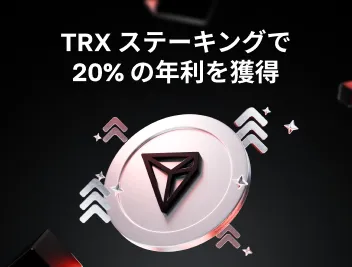
XRPとは?そして、どのように機能するのか
XRPを初めて聞いたことがありますか?「Ripple」という会社をご存知ですか?もしこれらの質問に疑問を感じた場合、この記事はそれらが何であるか、どのように機能するのか、そしてなぜ伝統的な金融システムにとって重要なのかを理解するための完璧な第一歩です。
XRPとは?
XRPの根本を理解するためには、Rippleが何であるかを知ることが重要です。なぜなら、RippleとXRPは同じものではないからです。Rippleは2004年にRipplepayとして始まったフィンテック企業です。この会社の主な目標は、国際取引をより安く、迅速にすることでした。2012年、David Schwartz、Jed McCaleb、Arthur BrittoがRipplepayを買収し、XRPというデジタル資産を作り出しました。XRPは、金融支払い分野の革新を推進することを目指したデジタル資産で、現在XRPはXRP Ledger(XRPL)という分散型、オープンソースの、脱中央集権型ブロックチェーンのネイティブトークンです。しかし、Rippleが57,818,864,895 XRPのうち50%を保有しているため、脱中央集権に関する問題は未解決のままです。
XRP Ledgerの主な特徴
前述の通り、XRP Ledgerは、安全で迅速、低コストの取引を提供するために設計されたブロックチェーンです。いくつかの独自の特徴があり、他のブロックチェーンネットワークと差別化されています。以下はその一部です:
-
独自の合意形成メカニズム: ビットコインのProof-of-WorkやイーサリアムのProof-of-Stakeとは異なり、XRP Ledgerは独自のRipple Protocol Consensus Algorithm(RPCA)を使用します。これは、ノードのネットワークが取引の順序と有効性について合意する方式です。
-
低い取引手数料: XRP Ledgerの取引手数料は、他の多くのブロックチェーンと比べて非常に低く、通常は1回の取引につき約0.00001 XRP(約$0.000385)です。
-
高いスケーラビリティ: XRP Ledgerは、1秒あたり最大1,500件の取引(TPS)を処理でき、これにより高いスループットを要求する金融機関にとって理想的です。
-
多様な相互運用性: XRP Ledgerは他の暗号通貨との相互運用性をサポートしています。Interledger Protocol(ILP)を使用することで、XRPは他のブロックチェーンネットワークと接続し、中央集権的な取引所を介さずに異なる暗号間でシームレスな転送を可能にします。
-
エネルギー効率の向上: XRP Ledgerは、PoWベースのブロックチェーンに比べて非常にエネルギー効率が高く設計されています。その合意形成アルゴリズムは、エネルギー集約的なマイニングを必要とせず、環境への負担を軽減します。
XRPはどのように機能するのか?
前述のように、XRPはProof-of-Workを必要とせず、エネルギーを消費しないRipple Protocol Consensus Algorithmを使用します。この技術は、信頼できるバリデーターのネットワーク、いわゆるUnique Node List(UNL)を通じて実現されます。これらのノードは取引を確認し、その順序に合意します。80%のノードが取引を有効だと判断すれば、1つのノードがその取引の検証を進めます。この独自のアプローチにより、XRPは取引を3~5秒以内に処理することができ、他の多くのコインに比べて迅速な決済を実現しています。
XRPの特徴は、XRPの主要な機能である国境を越えた価値移転を円滑にすることを目的としており、Rippleの決済ネットワークであるRippleNetにおけるブリッジ通貨として機能します。さらに、金融機関や決済サービス提供者は、XRPを使用して異なる通貨間での取引を迅速かつ低コストで決済でき、遅延や高額な手数料を回避することができます。
この点で、XRPはビットコインとよく比較されます。両者は支払い手段として使用されますが、非常に異なる方法で機能します。ビットコインはProof-of-Work合意アルゴリズムを使用しており、遅く、コストがかかり、エネルギーを多く消費します。一方、XRPはRipple Protocol Consensus Algorithmを使用して、より速く、安価な取引を実現します。BTCは価値の保存手段としてセキュリティと脱中央集権に焦点を当てていますが、XRPは特に国境を越えた支払いでのスピードとコスト効率を重視しています。ビットコインは政府管理の貨幣に代わるものを提供することで伝統的な金融を変革しようとしていますが、XRPは現在の金融システムと協力して国際取引の改善に取り組んでいます。

XRP vs 伝統的な銀行システム
XRPと伝統的な銀行システムは、取引を処理する方法において根本的に異なります。伝統的な銀行システムは、銀行、清算機関、決済ネットワークなどの複数の仲介者に依存して金融取引を行います。これにより、特に国際送金において遅延、高額な手数料、複雑さが生じることがあります。取引は数日かかることがあり、金額、国、関与する機関によって手数料が変動し、場合によっては300ドルに達することもあります。
それに対して、XRPはこれらの問題を解決するため、分散型で迅速かつコスト効果の高い($0.000385の手数料)代替手段を提供します。Rippleは、金融機関が国際送金を簡単かつ安価に行う方法を提供することで、国境を越えた支払いを効率化することに焦点を当てています。これにより、XRPは伝統的な銀行システムに対する魅力的な代替手段となり、ますます多くの銀行がXRPエコシステムを採用しています。
現在までに、Rippleは100を超える銀行を含む大手金融機関とのパートナーシップを築いています。その中には、サンタンデール銀行、アメリカン・エキスプレス銀行、SBIホールディングス、スタンダード・チャータード、バンク・オブ・アメリカなどがあります。このパートナーシップは、XRPの信頼性と実際の使用ケースを確立するのに役立っています。
XRPの利点と欠点
上記で説明したXRPの良い点にもかかわらず、取り扱い時に直面する可能性のあるいくつかの問題点もあります。お客様の便宜のために、XRPの主な利点と欠点を表にまとめました。
| 側面 | 特徴 | |
|---|---|---|
| 利点: | 特徴高い速度: XRPの取引は数秒で決済され、最も速い暗号通貨の一つです。 低い手数料: XRPの取引手数料は最小限であり(約$0.000385)、国境を越えた支払いと送金に非常に安価なオプションです。 高いスケーラビリティ: XRP Ledgerは1秒あたり1,500件の取引を処理でき、高需要の期間にも対応可能です。 エネルギー効率の向上: XRPはPoWベースのコインと異なり、特別な機器を必要とせず、エネルギー効率的なオプションです。 | |
| 欠点: | 特徴中央集権の懸念: XRP Ledgerは脱中央集権的ですが、RippleがXRP供給量の50%を保有しており、その中央集権化に対する懸念があります。 規制の不確実性: XRPはSECとの法的闘争を含む継続的な法的問題に直面しており、その長期的な未来は不確かです。 限られた使用ケース: XRPは主に国境を越えた支払いに使用され、DeFiやスマート契約プラットフォームなど他の分野では広く採用されていません。 採用の課題: Rippleは進展を遂げているものの、XRPはすべての銀行や金融機関で普遍的に受け入れられているわけではありません。 |
XRPは銀行システムを置き換えるわけではありませんが、取引を解決するより効率的な方法を提供することで、それを強化しています。その速度、低い手数料、エネルギー効率は、伝統的な金融と暗号空間の融合に準備ができた人々にとって理想的な仲間となります。
この記事は役に立ちましたか?残りの質問はありますか?コメントでお知らせください!
記事を評価








コメント
0
コメントを投稿するにはログインする必要があります